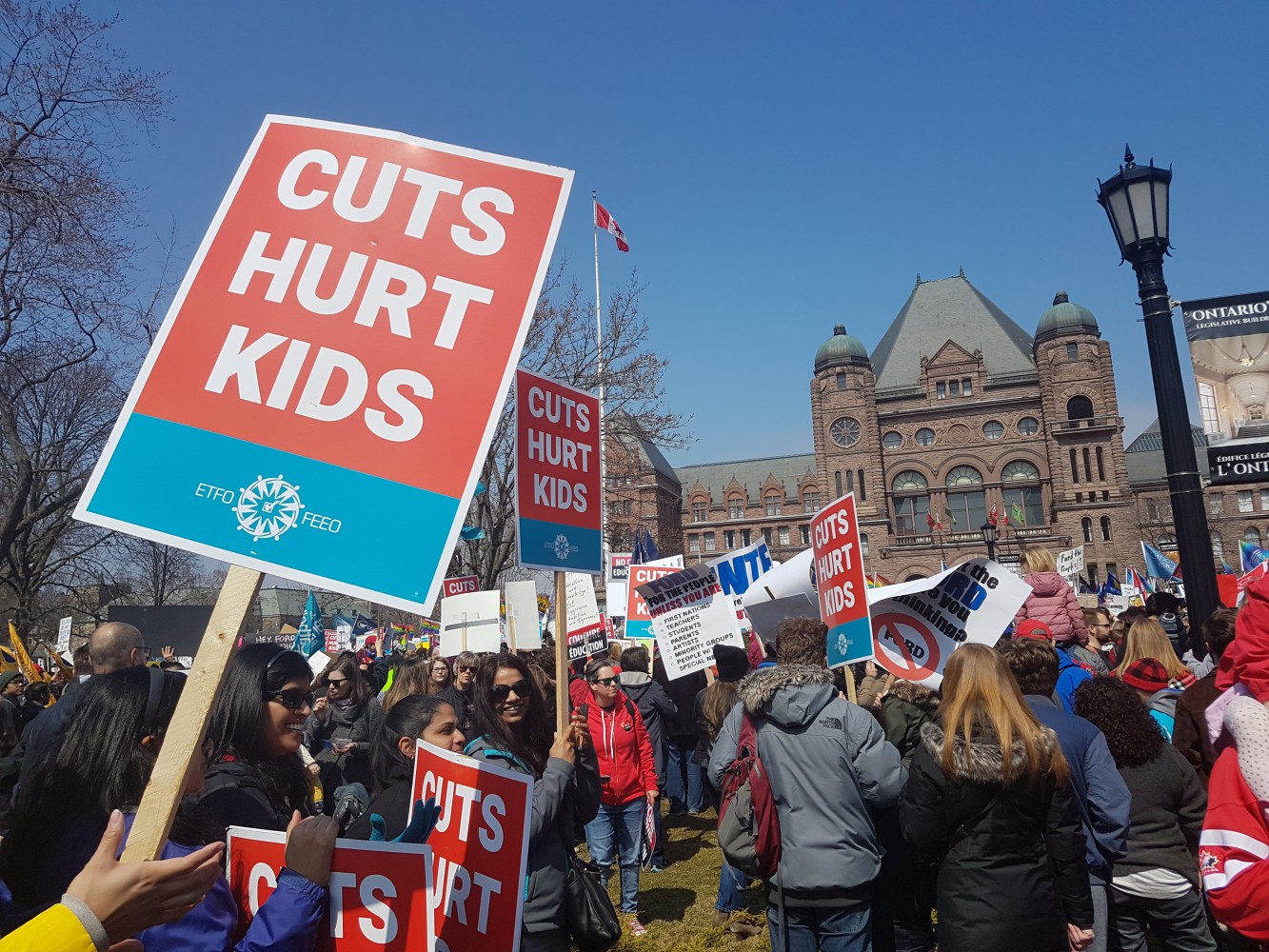
244,000 students in Peel could be locked out with teachers and provincial negotiators at a standstill and unions in pre-strike position
Ontario’s elementary and secondary school teachers are in position to “turn up the heat” on the province and the Ministry of Education as they begin work-to-rule action today, the first phase of strike action that the unions assure won’t impact students. It will let provincial negotiators know the teachers aren’t backing down from their calls for a reversal to cuts the PC government has made to education in the province.
The Elementary Teachers’ Federation of Ontario (ETFO) announced their intentions for the work-to-rule action earlier this month following a vote among its members that saw an overwhelming 98 percent of them support the strike mandate. The Ontario Secondary School Teachers’ Federation (OSSTF) quickly followed suit.
“Our members have told us that they need more support in the classroom for our students,” Gail Bannister-Clarke, president of Peel’s ETFO chapter, the second-largest ETFO chapter in the province, told The Pointer. “They were hopeful that it wouldn’t have to get here, but their vote definitely signified that they’re willing to do whatever is needed.”
Bannister-Clarke says the ETFO is taking particular aim at the cuts Premier Doug Ford and his government have imposed on funding for special education, a cut of $50 million, as well as the removal of $39 million introduced in 2017 to support students with special needs and other at-risk youth.
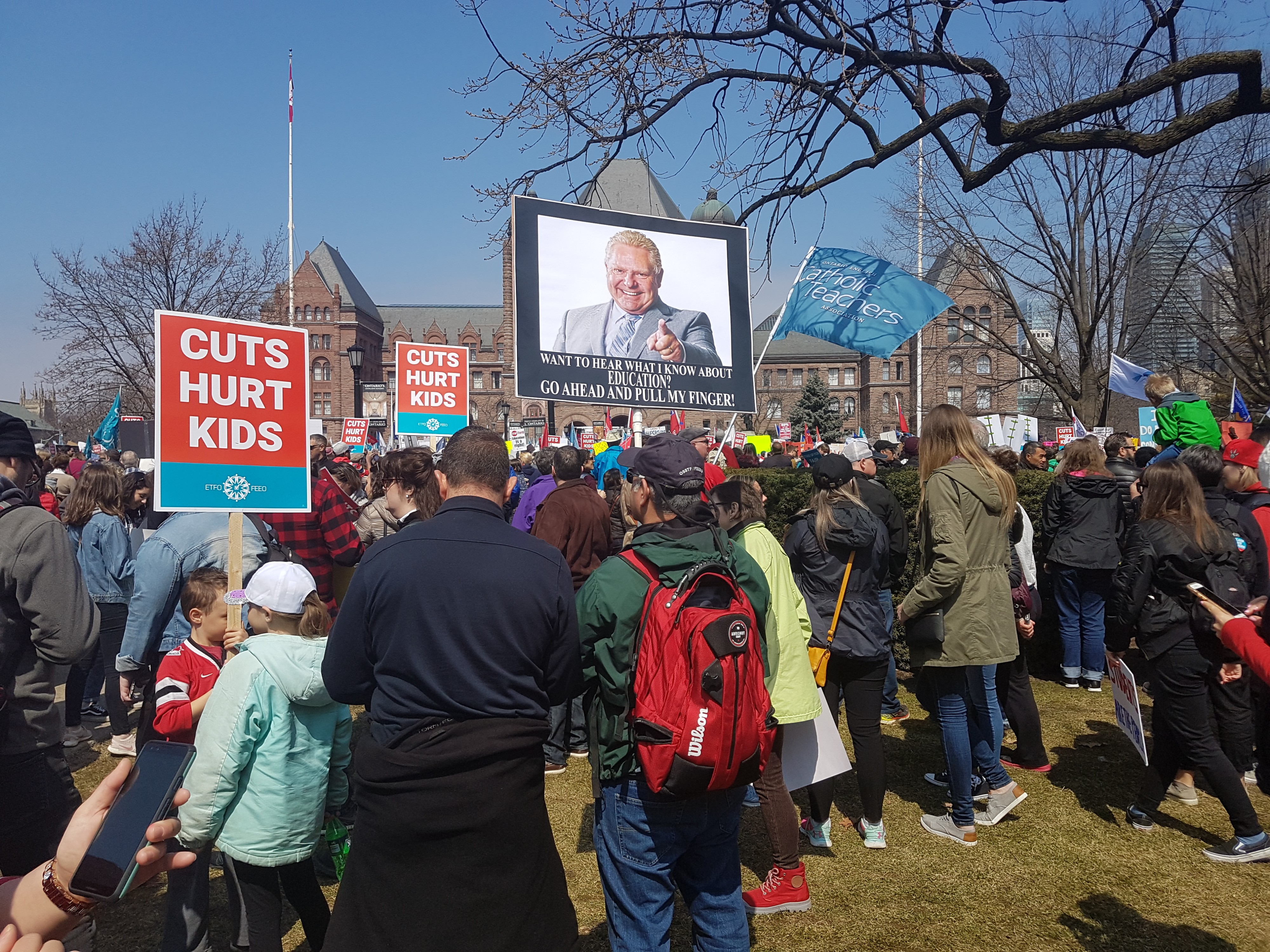
Teachers gather outside Queen's Park earlier this year to protest the Ford government's cuts to education.
This is only a small part of the funding cuts to the education system made by the Ford government.
Core support for public schools comes through the Grants for Student Needs (GSN) funding. As part of their budget, the governing PCs hailed what they described as an increase in funding to schools, projecting total spending for 2019-20 to be $24.65 billion, up slightly from the $24.61 billion invested in the previous school year. But the slight increase does not show the actual decrease in per student funding. (Funds are spread across many key grant areas, providing for classroom needs, school buildings and special programs.)
During the 2018-19 school year, the province spent an average of $12,293 per student, with just over 2 million students in the public education system. That amount will drop to about $12,246 for 2019-20, as enrolment province-wide is expected to grow by 11,601 students. So the claim by the PCs that more money is going into the education budget, while true, is misleading. The per-student cut ends a recent pattern under the previous Liberal government that saw student funding increase.
According to a release from the ETFO, the union has been discussing its concerns over funding, among other rights for teachers, with the province since June, but provincial negotiators are unwilling to listen.
“They’re not at the table having meaningful discussions,” Bannister-Clarke says. “They’re not responding in a meaningful way.”
In response, the work-to-rule action will see teachers halting any extra duties imposed upon them by the province, such as participating in courses mandated by the Ministry of Education, teachers will stop participating in EQAO standardized testing activities, will stop collecting data or surveys requested by the province, will not participate in school board activities and will not respond to work related emails outside of work hours.
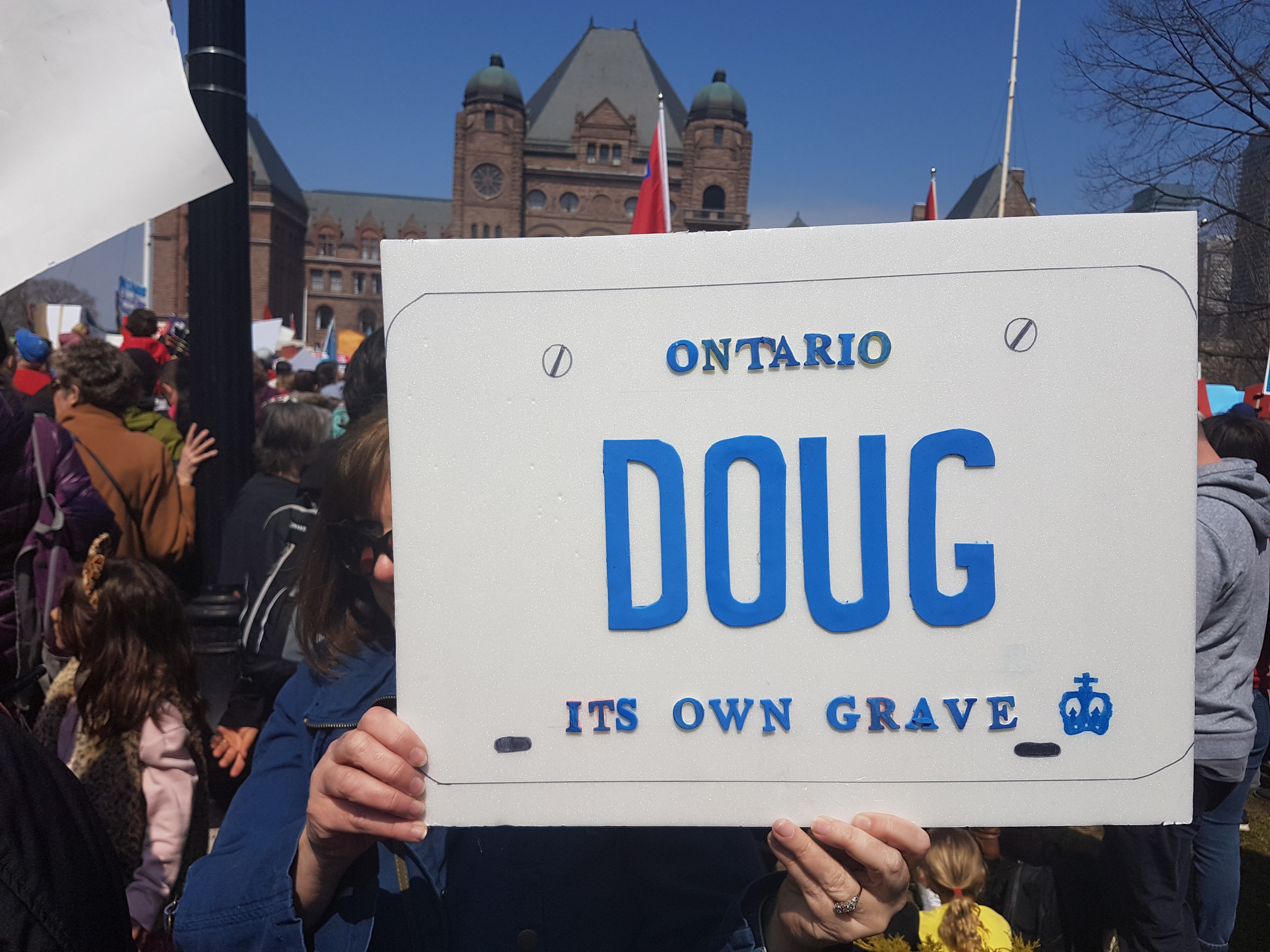
Additionally, teachers will not be completing term 1 report cards. Instead, teachers will provide the school administrator with a class list of marks for the various subjects or one brief comment per frame.
“The impact is going to be minimal or not at all to our students and our parents,” Bannister-Clarke says. “We’re still continuing to teach and test our students and communicate with parents.”
“The goal is to put pressure on the government,” she adds.
In a statement released today Education Minister Stephen Lecce said it was “regrettable” the union was deciding to escalate the situation to strike action, despite what he previously described as a “limited number of outstanding items at the table.”
"I've been clear – I want to get deals that keep the children of this province in school. It is regrettable the Elementary Teachers' Federation of Ontario (ETFO), and the Ontario Secondary School Teachers' Federation (OSSTF) have chosen to escalate to work-to-rule action, only hurting our children. This escalation to a partial withdrawal of services, including targeting math supports and report cards, hurts our children the most,” the statement reads. “The government has remained a consistent and reasonable force at the negotiating table, trying to reach a deal that provides certainty and predictability to parents, students, and educators. As evidenced by the voluntarily negotiated agreement with CUPE, I know we can get there through working together in good faith, so that students remain in class.”
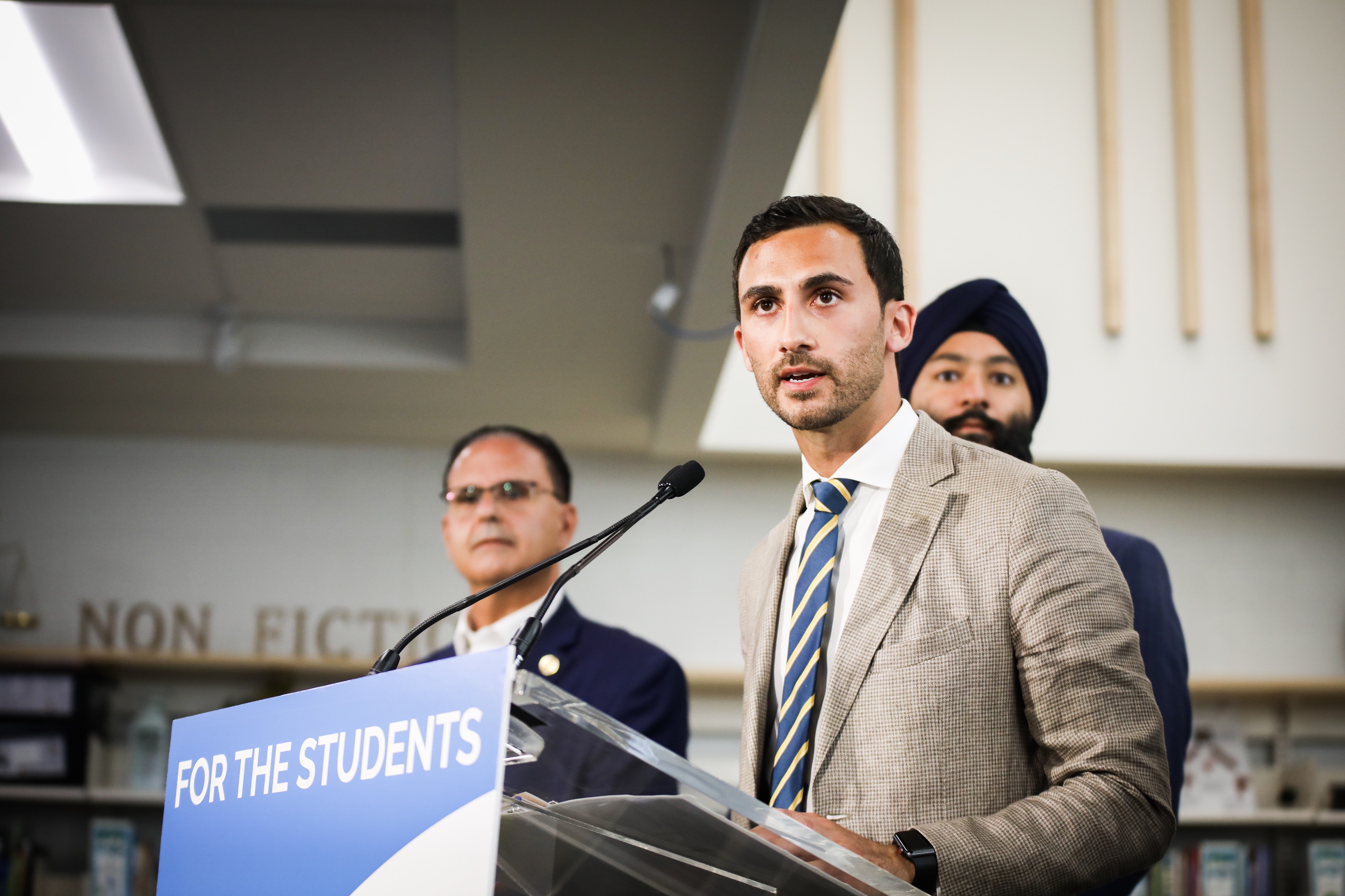
Minister of Education Stephen Lecce
A CUPE strike of support workers such as custodians, was averted at the last minute early in October, avoiding the shut down of 401 schools in Peel’s two publicly funded boards. The ETFO and the province agree that a similar outcome needs to be pursued.
“Teachers want to teach, we want to be in the classroom, we want to continue the voluntary things we do for our kids,” Bannister-Clarke says. However, the government’s cuts have left the union with no choice, she says, and it’s time for them to show the government that they’re serious about pushing back against the cuts.
“They are willing to fight for what is needed,” Bannister-Clarke states, adding that the union is more than willing to sit down and reach an agreement, and has consistently showed that willingness to the province.
At the same time, the province is also at odds with the OSSTF, representing high school teachers in Ontario. The two organizations have been in disagreement for months over issues relating to class sizes, funding cuts, and new e-learning requirements.
Similar to the ETFO, nearly 96 percent of OSSTF’s teachers voted in favour of strike action earlier this month as they are “losing their patience with a government that refuses to engage in meaningful discussion about major issues,” stated OSSTF president Harvey Bischof in a press release.
“We gave our notice to bargain almost seven months ago, but we are still waiting for even one meaningful, serious response to our key proposals that address the quality of publicly funded education,” he stated. “We are at the bargaining table today and not on the picket line as we could have been. This is a choice we made for this week because we remain committed to looking for solutions through negotiations. I sincerely hope the Ford government seeks the same and isn’t intent on creating additional unnecessary conflict.”
The strong stance by both unions is not surprising. In 2019 the Ford government has shown themselves quite vulnerable to serious public pressure, something both unions are well aware of, and can use to their advantage to force the government to step back from many of its controversial proposals.
Earlier this year, the province moved ahead with increasing Ontario’s class sizes by an average of one extra student in Grade 4 to 8 classrooms, and high school classes were going to increase from an average of 22 students to 28. The shift resulted in 330 teachers in the Peel District School Board, both elementary and high school being served in April with “surplus to board” notices stating there were not enough positions to keep them employed.
Most of those teachers now have their jobs back in one capacity or another, in large part because the province backed off on the increase, in the face of a huge public backlash, saying it would be waiting until next year to move ahead.
Then in October, the province went one step further and announced classes would be capped at 25, not the initially proposed 28.
Lecce noted the government had heard “overwhelmingly” that parents want a deal to be reached with teachers, and a step back on the class sizes was “a sufficient step forward.”
“We have been listening, we have heard your concerns, and we are taking action by reducing class sizes, this government remains solely focussed on one aim, that is to keep your child in class,” Lecce said. “Strike action would disproportionally hurt our most vulnerable students in the classroom.”
The reduction in class sizes was framed by Lecce as an olive branch for the unions after weeks of negotiations failed to result in a deal due to differences around teacher compensation. The province is looking to keep salary increases to 1 percent annually throughout the term of the next contract, but the OSSTF is seeking 2 percent.
The OSSTF moved forward with a “no board” report, essentially a step closer to strike action.
However, similar to the provincial decision in August to delay the class size increases, which union president Harvey Bischof labelled as “smoke and mirrors”, the later move to a lower cap was denounced by the union as misleading because it would actually remove class size caps altogether in local collective agreements.
At the time he said, “The proposal that we received... is, in fact, worse than the Ford government’s original plan to hike average class size ratios to 28:1. A move from the current class size ratio of 22:1 to 25:1 would still remove roughly 5,000 teachers from our high schools. And with the removal of locally-enforceable class size caps, there would essentially be no limits on the size of classes into which Ontario students could be squeezed.”
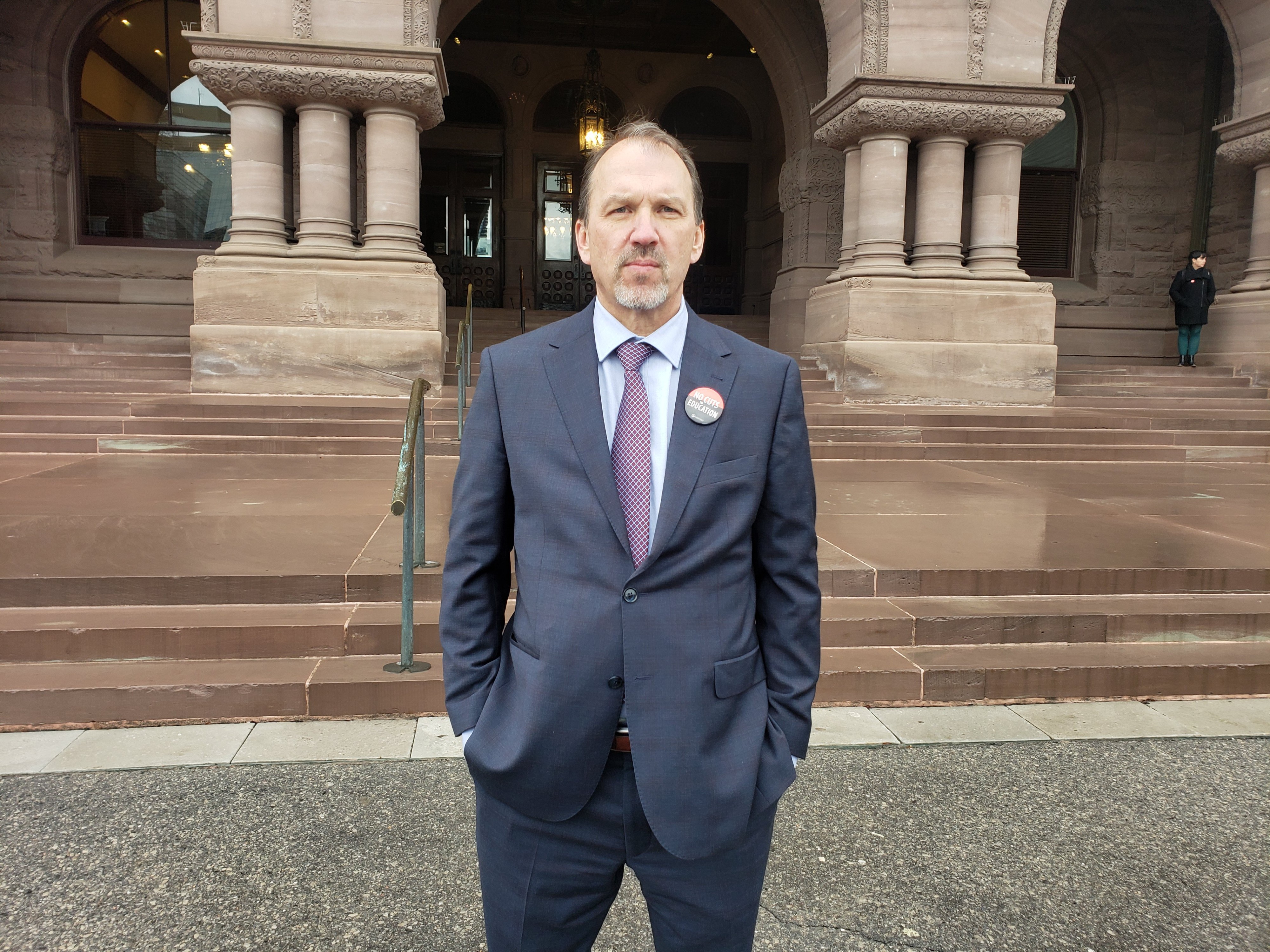
OSSTF president Harvey Bischof
When asked about the removal of these local class size limits by reporters during a press conference, Lecce sidestepped the question, repeatedly reiterating that the real problem lies with the union, not the province.
“It is a sufficient number to get a deal,” he said of the class size decrease, adding the province has continued to put forward “demonstrable” actions toward avoiding a strike.
“What my partners in the union (are) doing is the exact opposite,” he said at the time. “There’s a casualty of this action and it isn’t me, and it isn’t the union, it’s the kids…Let’s get out act together and get a deal.”
When the province first announced the proposed class sizes, the news was particularly worrisome for educators in Brampton. The city has one of the highest average rates of school-age children per household in the province, largely because of a higher average number of residents per household (according to the 2016 census Brampton had 3.5 residents per household, compared to 2.6 across Ontario and 2.4 nationally) and large numbers of families living in secondary suites which planners cannot predict when trying to align the number of area building permits with school capacity in the same neighbourhoods.
This has led to the city’s schools already being stretched beyond their capacity, often bursting at the seams, forcing hundreds of students to learn outside school buildings in portable classrooms that are intended for temporary relief. In Brampton, it’s not uncommon to see more than a dozen of these portable structures, which have become permanent fixtures, lining the fields and parking lots of the city’s schools.
Just last week, with mounting public pressure, the province once again stepped back from one of its initial proposals, announcing a reduction in its plan for required e-learning courses in high school. Instead of four online courses, students now only have to take two.
The shift toward e-learning was criticized by teachers and parents, many of whom were concerned about the impacts of drifting away from lessons in a supervised classroom setting with a teacher, in favour of online information and tests. Critics point out that school boards in rural areas do not have strong internet connections and some students who have a more hands-on learning style might not benefit.
Email: [email protected]
Twitter: @JoeljWittnebel
Submit a correction about this story


